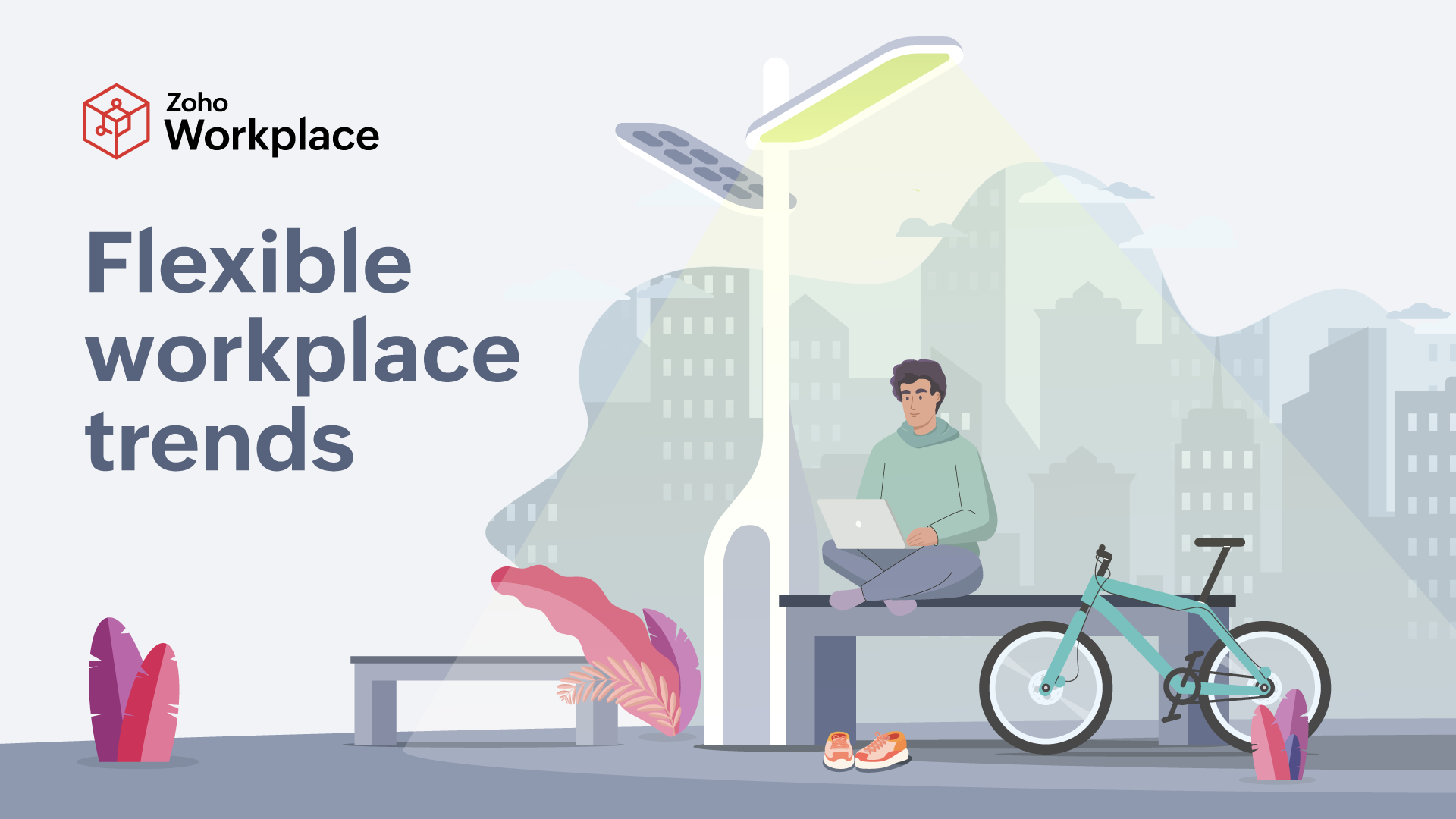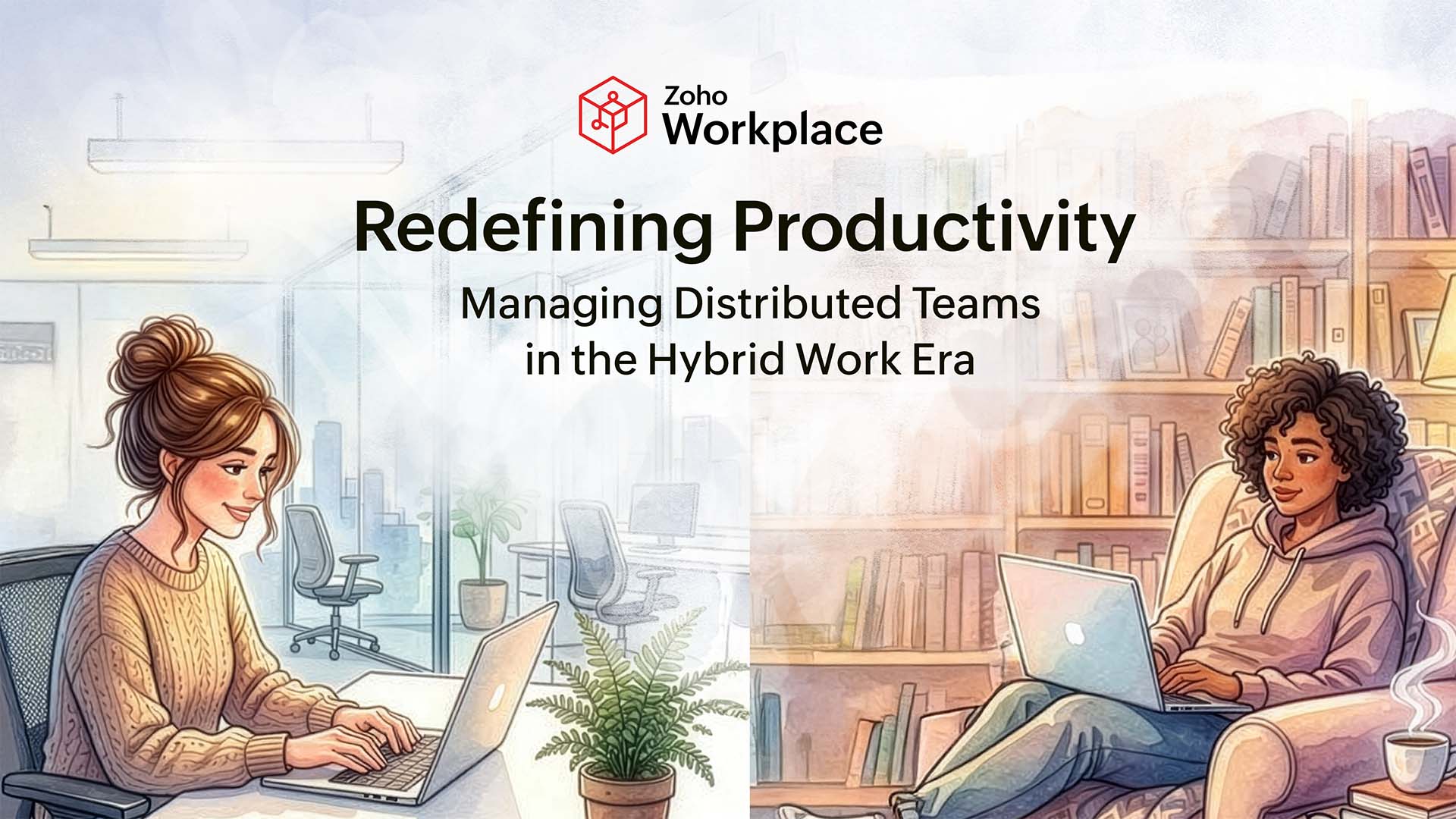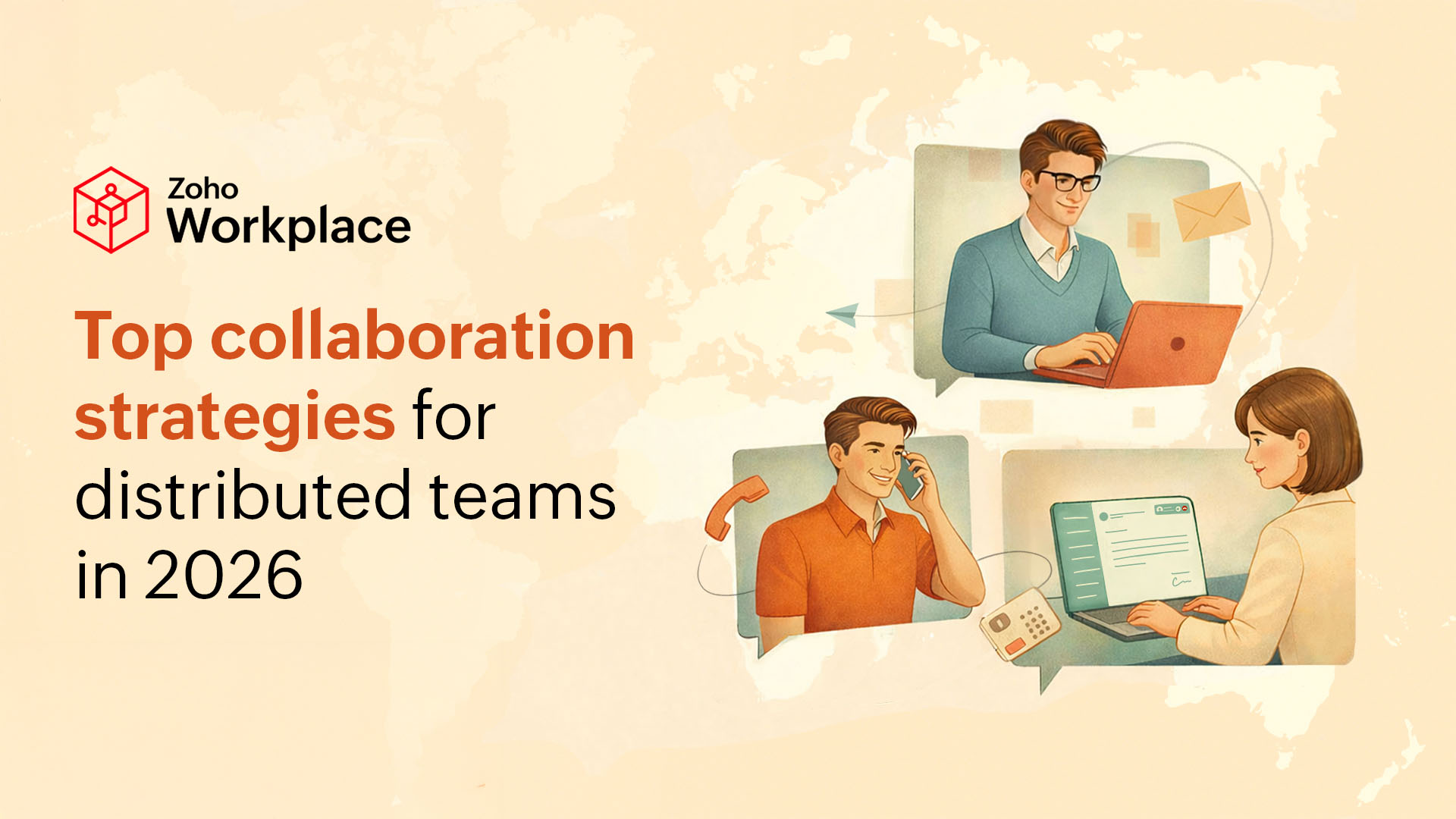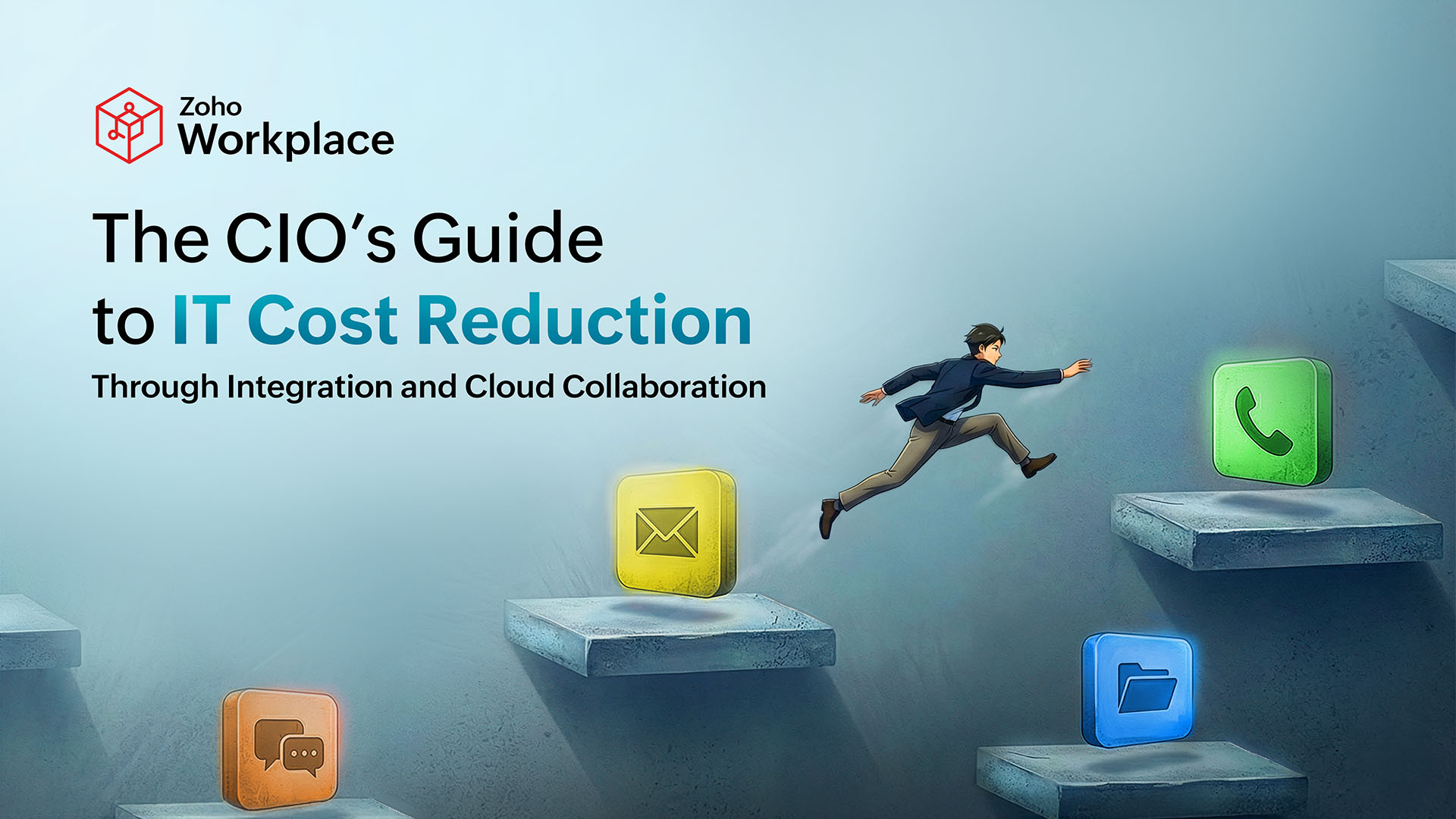- HOME
- All Topics
- Collaboration and Digital Workplace
- Flexible workplace trends in 2024
Flexible workplace trends in 2024
- Published : May 13, 2024
- Last Updated : October 17, 2024
- 1.2K Views
- 5 Min Read
The modern workplace is undergoing a profound transformation driven by the accelerating adoption of flexible work models.
The concept of the traditional 9-to-5 office job is rapidly changing, giving way to a more dynamic and adaptable work environment that caters to today's workforce's diverse needs and preferences.
Data shows that about 80% of the workforce now considers a job's flexibility before accepting an offer. This means that more and more employers are now turning to flexible work trends to attract and retain talent.
This article will explore the key characteristics of flexible workplaces, the drivers behind their rise, and the major trends that will define the workplace in the year ahead.

Key flexible workplace trends in 2024
The COVID-19 pandemic greatly accelerated the trend toward flexible and adaptable work environments. Today, the "flexible workplace" concept has become increasingly prevalent, transforming the landscape of how and where we accomplish our professional tasks.
Here are some of the new trends shaping the flexible workplace today.
Hybrid and remote work models
Hybrid work is a combination of in-office and remote work. In this model, employees are allowed to be flexible with their work location. This model is designed to balance the benefits of face-to-face collaboration with the advantages of working remotely.
Employees typically spend part of their week in the office, and the rest of the time working from home or another remote location. Companies find that this model boosts productivity, supports employee well-being, and helps retain talent by accommodating different work preferences and life circumstances.
In a remote work model, employees don’t work in a traditional office set up at all. Instead, they can work from anywhere—home, co-working spaces, or even from different cities or countries.
Employees benefit from eliminated commutes, as well as more creativity and greater autonomy, though this setup requires robust digital communication tools and well thought out processes to maintain team cohesion and operational efficiency.
Hot desk model
With hot desks, employees don't have assigned, permanent desks. Instead, they use available workstations whenever they come into the office.
The idea behind hot desking is to use office space more efficiently. Because not all employees are in the office full time, hot desking allows companies to reduce the number of dedicated desks, which can help save on real estate costs.
For employees, hot desking provides better flexibility. They can choose to work at different stations based on the task they're doing or their mood that day. Some spaces may be better for focused work, while others are more collaborative.
Hot desking works well in hybrid work models, where people divide their time between the office and remote locations. Because employees aren't in the office every day, there are usually enough available desks to go around, but companies still must provide the right technology and tools.
The shift to hot desking also requires a change in mindset. Employees need to be comfortable not having a permanent, personal workspace. And they must be good at quickly setting up their work wherever they sit.
Four-day work week model
The four-day workweek model is gaining traction as a viable work model, where you will find employees working 32 hours across four days instead of the traditional 40 hours over five days. The potential for increased productivity and employee well-being drives this shift. Companies that have adopted this model, like Microsoft in Japan, reported a 40% increase in productivity, or even more in some cases.
Workers also benefit from an improved work-life balance, reduced stress, and lower burnout rates. Additionally, a shorter workweek can lead to environmental benefits by reducing commuting, which decreases carbon emissions.
Despite these advantages, implementing a four-day week requires careful planning to cover all business needs and ensure customer satisfaction. Challenges include adjusting workloads, reorganizing schedules, and maintaining clear communication on work goals.
Implementation of generative AI
Generative AI is significantly transforming the workplace by streamlining workflows and enhancing creative processes across various industries.
This technology integrates natural language processing and advanced reasoning, and optimizes productivity by facilitating access to information across applications and automating mundane tasks. It allows employees to focus on more complex and creative work, reportedly increasing productivity and improving the quality of outcomes.
Likewise, AI also democratizes access to sophisticated technology, allowing employees without technical backgrounds to perform complex data analysis or content creation, broadening the scope of who can leverage AI in the workplace.
However, integrating generative AI into the workplace also necessitates careful management of ethical considerations, data privacy, and the potential for job displacement. Training programs and clear guidelines are essential to ensure responsible use and help employees understand how to interact with AI tools effectively and ethically.
Support for mental well-being of the employees
Enhancing mental health and employee well-being is crucial for improving productivity and satisfaction in the workplace.
This shift comes as 38% of employees report serious burnout, highlighting the urgency for effective wellness strategies. Companies are deploying a variety of tools—from simple WordPress platforms for sharing wellness tips to comprehensive meal plans—that cater to the diverse needs of a workforce accustomed to the flexibility of remote work.
Likewise, organizations are also offering mental health programs that provide tailored counseling services, frequent mental health check-ins, and specialized training for managers to support their teams better.
Additionally, the integration of artificial intelligence in wellness programs personalizes mental health support, offering customized care plans and advice based on individual needs.
This holistic approach addresses physical health and focuses on emotional and psychological well-being. Supported by technology, these initiatives make mental health resources more accessible and reduce stigma, ensuring ongoing support through digital platforms and enhancing the overall workplace environment.
Benefits of flexible workplaces
Flexible workplaces offer a range of benefits for both employees and organizations. Here are some of the key benefits.
Better productivity and job satisfaction
Increased work-life balance and decreased burnout
Access to a larger talent pool and improved employee retention
Reduced overhead costs for organizations
More efficient use of resources and higher profitability
Enhanced employee autonomy
Ability to attract top talent and their retention
Reduced stress and time savings from eliminated commutes
Better focus and engagement from employees
Increased flexibility and adaptability for both employees and organizations
The challenges of flexible workplaces
While flexible workplaces offer numerous benefits, they also come with their own set of challenges that organizations need to address.
Maintaining a strong company culture and employee engagement can be more difficult when teams are distributed and working remotely. Fostering a sense of community and collaboration requires extra effort and the use of virtual team-building activities.
Another key challenge is ensuring data security and privacy in remote work environments. With employees accessing sensitive information from various locations and devices, the risk of data breaches and cyberattacks increases. Organizations must invest in robust cybersecurity measures, such as virtual private networks (VPNs), multi-factor authentication, and employee training on best practices for identity theft protection.
Balancing work-life boundaries can also be a struggle for some employees in flexible workplace setups, while there are also concerns about equity and inclusion in hybrid work models. Employees who work remotely may miss out on important in-person interactions, networking opportunities, and access to resources available to their on-site counterparts.
Conclusion
Flexible workplace models are becoming a permanent feature of modern work life. Companies that adapt to this trend and focus on their employees' needs will have a better chance of attracting skilled workers, increasing productivity, and staying competitive.
Organizations need to be thoughtful and proactive when implementing flexible work arrangements. Investing in the right technology, policies, and support systems is crucial for creating a work environment that adapts to current trends, supports employee empowerment, and ensures long-term organizational success.
 Gary Stevens
Gary StevensGary Stevens is the CTO of Hosting Canada, a website that provides expert reviews on hosting services and helps readers build online businesses and blogs. Gary specializes in topics on cloud technology, thought leadership, and collaboration at work.


